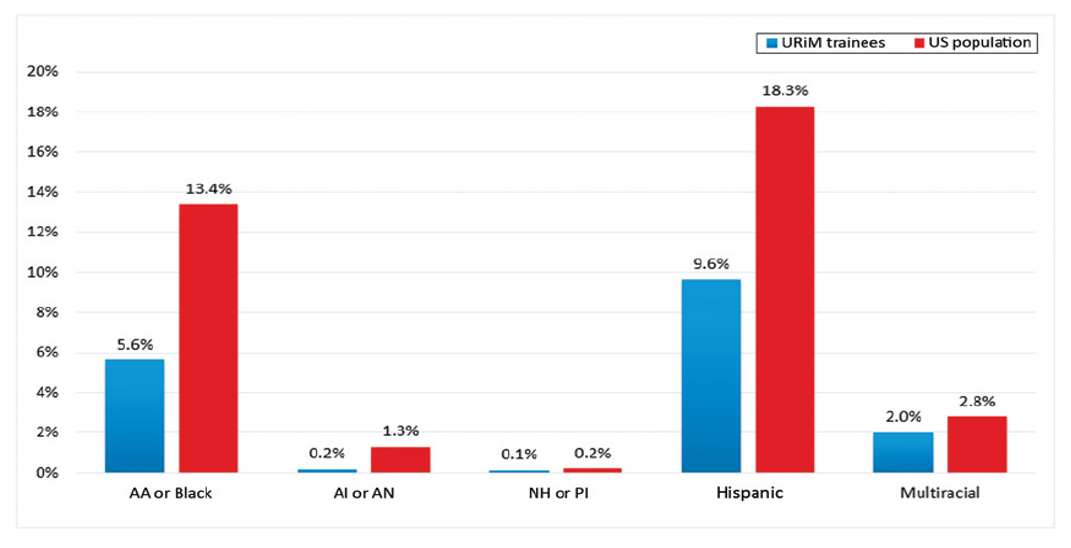The Association of American Medical Colleges (AAMC) describes underrepresented in medicine as, “those racial and ethnic populations that are underrepresented in the medical profession relative to their numbers in the general population.” Supporting career pathways for those currently underrepresented in medicine increases their representation in the workforce and improves the overall access and the quality-of-care pediatric patients receive. Presently, the representation of Underrepresented in Medicine (URiM) pediatric trainees aiming to enter the workforce are not proportional to their representation in the general population.

Figure 1
Percentage of URiM trainee representation compared with US population representation, 2019. Source: Trends in Race/Ethnicity of Pediatric Residents and Fellows: 2007–2019.
Ongoing discussions across medical societies about physician diversity have broadened to include not only race, ethnicity, and language but also social identities such as gender, sexual orientation and disability and cultural attributes such as religious beliefs. Efforts that promote the implementation of interventions along the pathway are needed to encourage diverse students, especially those underrepresented and historically excluded to pursue careers in medicine. There are ongoing efforts at the Academy to engage and support URiM students by developing opportunities to increase interest in and exposure to pediatrics.
Last Updated
02/22/2022
Source
American Academy of Pediatrics